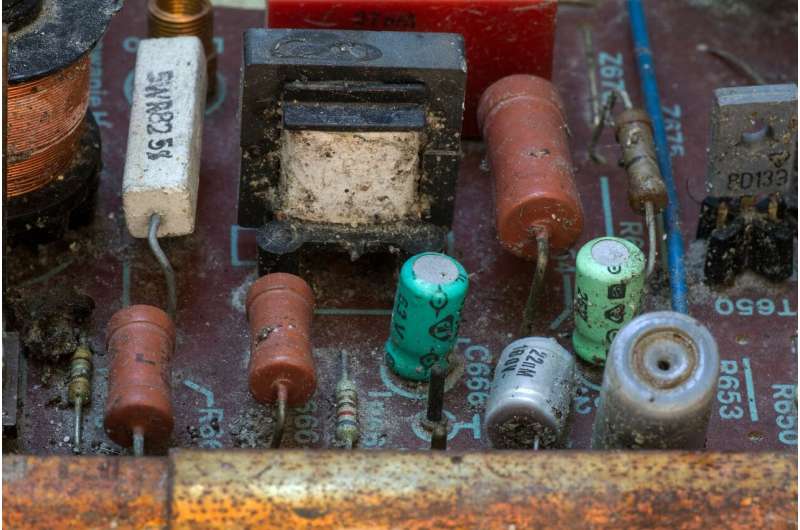E-waste recycling emits emerging synthetic antioxidants

Manufacturers add synthetic antioxidants to plastics, rubbers and other polymers to make them last longer. However, the health effects of these compounds, and how readily they migrate into the environment, are largely unknown. Now, researchers reporting in ACS' Environmental Science & Technology Letters have detected a broad range of emerging synthetic antioxidants, called hindered phenol and sulfur antioxidants, in dust from electronic waste (e-waste) recycling workshops, possibly posing risks for the workers inside.
Previous studies revealed widespread environmental pollution and human exposure to a class of compounds called low-molecular weight synthetic phenolic antioxidants. In lab experiments, some of these compounds were toxic to rodents or human cells. Recently, manufacturers introduced a class of high-molecular weight synthetic phenolic antioxidants, also known as hindered phenol antioxidants (HPAs), with improved performance and slower migration from products. In addition to HPAs, compounds called sulfur antioxidants (SAs) are often added to rubber and plastic polymers as "helper" antioxidants. The toxicological effects and environmental occurrence of most of these new compounds are unknown. Therefore, Lixi Zeng and colleagues wanted to investigate the occurrence of emerging HPAs and SAs in dust from e-waste recycling centers—workshops where large amounts of discarded electronics, such as laptop computers, cell phones, tablets, wires and cables are dismantled and processed.
In August 2020, the researchers collected 45 dust samples from three categories of e-waste recycling workshops in an industrial park in Yichun City, China: wire and cable dismantling, electronic plastic processing, and general e-waste dismantling. Then, they used liquid chromatography/tandem mass spectrometry to screen for 18 emerging HPAs and 6 emerging SAs. All 24 compounds were detected in the dust: 22 for the first time, and some at relatively high levels compared with other e-waste pollutants. Although dust concentrations of SAs were similar for the different categories of workshops, centers that dismantled wires and cables and processed electronic plastics had significantly higher levels of dust HPAs than those that dismantled general e-wastes. Given the ubiquitous occurrence of emerging HPAs and SAs in e-waste dust, further research is needed on their environmental behaviors, fates, toxicities and risks, the researchers say.
More information: Massive Emissions of a Broad Range of Emerging Hindered Phenol Antioxidants and Sulfur Antioxidants from E‑Waste Recycling in Urban Mining: New Insights into an Environmental Source, Environmental Science & Technology Letters (2021). pubs.acs.org/doi/abs/10.1021/acs.estlett.1c00866
Journal information: Environmental Science & Technology Letters
Provided by American Chemical Society




















